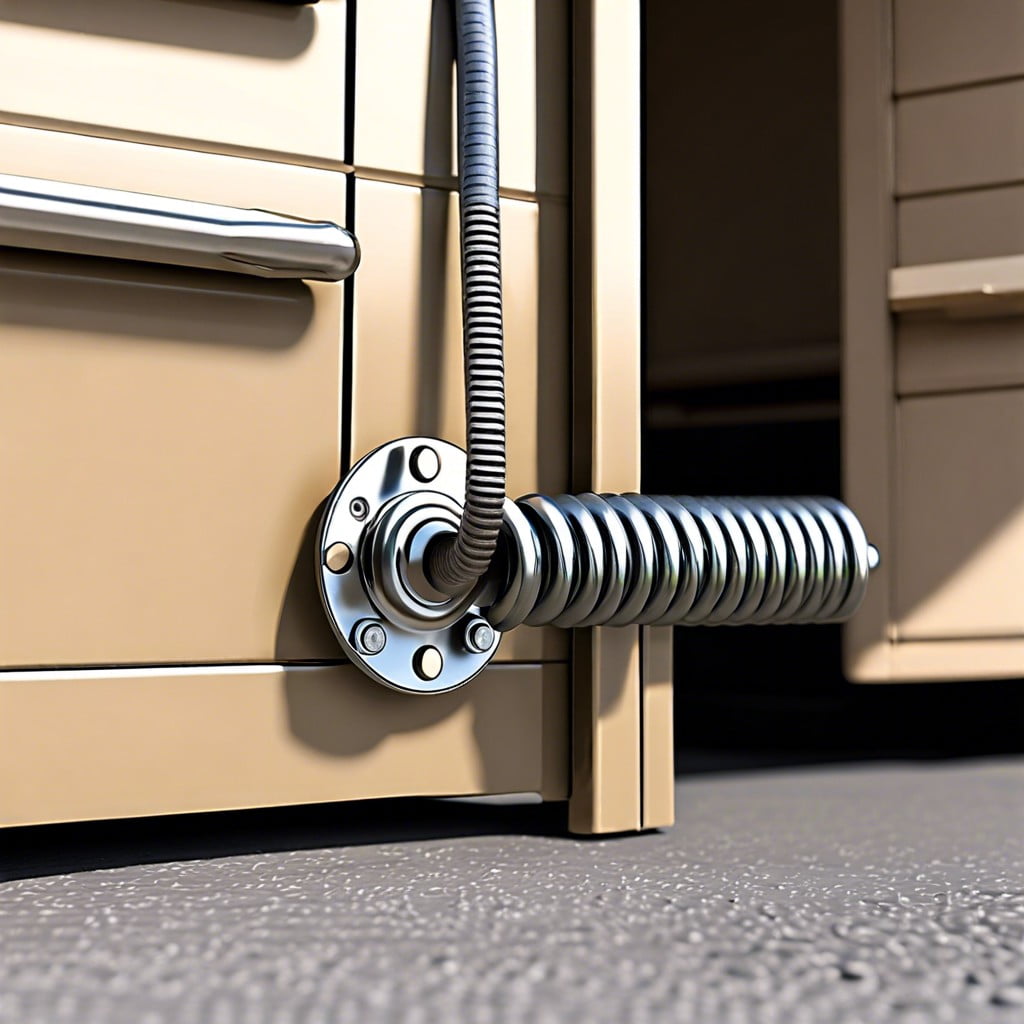This article will guide you in selecting the appropriate torsion spring size for a 16×7 garage door.
Key takeaways:
- Torsion springs balance the weight of a garage door.
- Determine the correct spring size based on door weight and dimensions.
- Consider usage patterns and cycle life for durability.
- Hiring a professional saves time and ensures accuracy.
- Practice safety precautions when working with torsion springs.
Understanding Torsion Springs

Torsion springs are crucial components that balance your garage door by applying torque. They are mounted above the garage door opening, and their primary role is to make lifting and lowering the door smooth and effortless. Each spring is wound at specific tension levels suited to the door weight and size. Without these springs, the door would be incredibly heavy to lift manually and could cause premature wear on the garage door opener. Understanding these basics ensures you’re better equipped to make informed decisions about replacements or upgrades.
Determining the Right Size
To ascertain the correct torsion spring size for a 16×7 garage door, focus on two main attributes: weight and size of the door. Torsion springs counterbalance the door’s weight, ensuring smooth and safe operation. Here’s how to figure out the appropriate size:
Firstly, check the door’s weight. If you’re replacing an old spring, the weight can usually be found in the door manufacturer’s specifications. For a new installation, a bathroom scale placed under the door can work in a pinch.
Next, consider the wire size, inside diameter, and length of the spring. These dimensions bear a direct relationship to the door’s weight and size. Usually, these measurements can be taken directly from the old spring. If this is your first time, consider consulting with a professional to avoid errors.
Lastly, adjust for usage patterns. Garage doors that see more frequent use may require springs with a higher cycle life, which directly affects durability. Opting for a longer-lasting spring initially can potentially save money on future replacements.
Consulting a Professional
While DIY solutions might tempt you, bringing in an expert can save time and prevent costly mistakes. Professionals will have the right tools and knowledge to measure and install the torsion spring accurately, ensuring it’s perfectly tuned for your 16×7 garage door. Here are a few benefits of hiring a professional:
- Accuracy: Expert technicians can quickly determine the correct spring size and tension needed.
- Safety: Incorrect installation can lead to injuries or damage. Professionals follow safety protocols to minimize risks.
- Warranty: Many professionals offer guarantees on their work, giving you peace of mind.
- Time Efficiency: What might take you a weekend, a professional can usually accomplish in a few hours.
Contacting a trusted local garage door service is the best first step in replacing your torsion spring. They can provide guidance tailored to your specific situation, help procure the right spring, and handle the installation. By engaging experts, you leverage their experience to secure seamless functionality and longevity of your garage door.
Spring Safety Precautions: Protecting Your Home and Loved Ones
Torsion springs under tension can pose serious risks if not handled properly. Always wear safety goggles and gloves during installation or adjustments to shield yourself from potential injury. Ensure the garage door is clamped open while you work to avoid accidental closures.
Before beginning any work, disconnect the garage door opener to prevent unexpected activation. Regularly inspect springs for signs of wear or corrosion. Frayed cables or cracked coils are signals that the springs may need replacement to maintain safety and door functionality. If you notice any damage, call a professional to handle the repair.
Finally, keep children and pets away from the garage door, especially during maintenance sessions. A little precaution goes a long way in preventing accidents and keeping your family safe.
Garage Door Spring Size Chart: Torsion Springs
A well-structured size chart can simplify the process of selecting the correct torsion spring for a 16×7 garage door. Typically, these charts are based on the door weight and height. Here’s what you need to know:
– Door Weight: First, determine the total weight of your garage door. Heavier doors will require springs with a higher IPPT (inch-pounds per turn) rating.
– Spring Length: For a standard 16×7 door, springs are usually between 20 and 32 inches long, but check the chart for specifics related to weight.
– Wire Size: This refers to the thickness of the spring’s wire, crucial for supporting the door’s weight effectively. Typical sizes range from .250 to .375 inches.
– Inside Diameter: Common diameters are 1.75 or 2 inches, though this might vary based on door manufacturer and model.
Using these criteria, reference a detailed torsion spring size chart, often provided by garage door manufacturers or specialty websites, to find the exact match for your door’s specifications. This ensures the mechanics of your garage door operate smoothly and reliably.